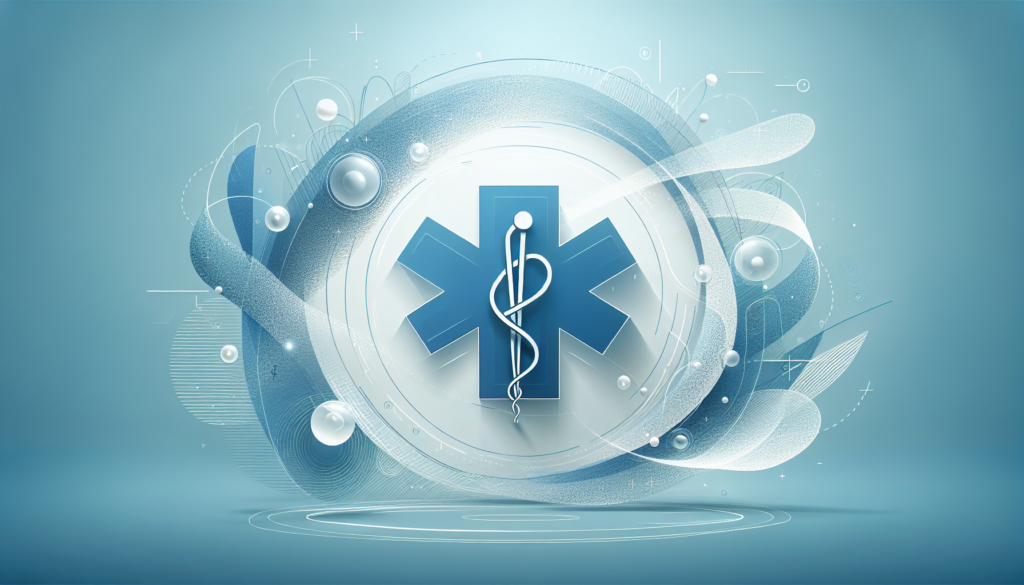Understanding Capitalization Rules in Medical Writing
Medical writing is a nuanced domain that demands precision and adherence to certain stylistic conventions, of which capitalization is a significant aspect. As part of the plethora of writing tools available to medical professionals, it is vital to grasp these capitalization rules to ensure clarity and correctness. In the medical field, this concerns the accurate portrayal of diseases, medications, and procedures. For instance, diseases named after a person, such as Parkinson’s disease, always have the personal noun capitalized, whereas common diseases like diabetes are not. Understanding these distinctions helps medical professionals maintain a uniform language in their documentation, such as the medical notes generated through platforms like ScribeMD.
- Names of Diseases: Parkinson’s disease, Alzheimer’s disease (proper nouns are capitalized)
- Common Ailments: diabetes, asthma (non-proper nouns are lowercase)
- Medicinal Brands: Advil, Tylenol (brand names capitalized)
- Generic Medications: ibuprofen, acetaminophen (generic names lowercase)
- Medical Procedures: Magnetic Resonance Imaging (MRI) is capitalized as an acronym, whereas the term ‘angioplasty’ remains lowercase.
When it comes to the designation of medical titles and roles, capitalization likewise follows a methodical approach. A title such as ‘Registered Nurse’ is capitalized when preceding a personal name, acting as a formal title, but seen in a general context, ‘nurses and doctors’ remains lowercase. This distinction is not just a matter of formal writing but of conveying the correct level of respect and professionalism required in healthcare documentation. These standards assist digital platforms such as an AI-powered digital scribe in interpreting and transcribing spoken language with the highest attention to grammatical details, thus aiding in the production of correct and professional medical records.
- Formal Titles: Dr. John Smith, Registered Nurse Samantha Doe (title before a name)
- General Context: the doctors, the nurses, the head surgeon (general terms)
Furthemore, the capitalization of instruments and tests within medical notes adheres to distinct rules. Brand-specific devices or tests receive capital initials, much like proprietary medications. For example, the Philips Respironics device retains its capitalization due to its brand specificity. In contrast, common equipment like stethoscopes or general tests such as blood pressure measurements are not capitalized. These subtleties in writing conventions may appear minute, but they significantly impact the readability and professionalism of medical documents. Ensuring these rules are abided by in automated note-taking, such as with a digital scribe service, upholds the standard expected in medical documentation.
- Brand-Specific Devices: Philips Respironics, Welch Allyn Otoscope
- Common Equipment: stethoscope, thermometer, sphygmomanometer (general terms)
- Tests and Procedures: electrocardiogram, echocardiogram (specific but non-proprietary tests lowercase)
Implementing these capitalization rules in medical writing is not merely an editorial preference but a foundational component of the field’s communication. As medical professionals look to technologies like those offered by ScribeMD to streamline their workflow, the importance of such conventions in the realm of digital transcription cannot be overstated. The ability to accurately represent these grammatical standards is indicative of the sophisticated language models at work, allowing practitioners to focus more on patient care while ensuring that their medical notes are of the highest quality.
When to Capitalize Medical Specialties and Disciplines
Deciphering the rules of capitalization for medical specialties and disciplines can be a bit of a conundrum for healthcare professionals, medical writers, and even the general audience. It’s essential to understand that, within these fields, capitalization not only helps to maintain consistency and professionalism in written communication but also aids in delineating specific terms and titles from general concepts. For instance, capitalize medical specialties when they are derived from proper nouns; ‘Alzheimer’s disease’ and ‘Parkinson’s disease’ are capitalized because they are named after individuals. However, general medical terms, such as ‘cardiology’ or ‘neurology,’ are not capitalized unless they are part of a formal department name or at the beginning of a sentence.
In the case of medical disciplines, the key is to determine whether the term is used as a proper noun or within a formal title. When referring to job titles or specific departments within a hospital or clinic, capitalization should be used. Examples include ‘Department of Orthopedics’ or ‘Chief of Plastic Surgery.’ On the other hand, when talking about the disciplines in a general sense, such as “she specializes in orthopedics,” no capitalization is necessary. Medical disciplines should also be capitalized when they appear on a resume or a similar document, highlighting the specifics of an individual’s expertise or the name of a department.
- Proper nouns or diseases named after people: Always capitalize (e.g., Crohn’s disease, Asperger syndrome)
- Medical disciplines as formal titles: Capitalize (e.g., Director of Rheumatology)
- Medical disciplines in general reference: Do not capitalize (e.g., pediatric care, oncology research)
Lastly, style guides play a significant role in guiding capitalization norms. The American Medical Association (AMA) Manual of Style and the American Psychological Association (APA) have specific guidelines for medical writing. For professional clarity and academic integrity, it’s always a wise choice to consult the relevant style manual pertinent to your field or purpose of writing. Moreover, adhering to a standardized guideline ensures uniformity across various platforms, which is particularly crucial in collaborative environments where documentation is shared among healthcare professionals.
| Term | When to Capitalize | Examples |
|---|---|---|
| Diseases named after individuals | Always | Alzheimer’s disease, Parkinson’s disease |
| Medical specialties in formal titles | In titles and names of departments | Department of Cardiology, Head of Nephrology |
| General medical terms | At the start of a sentence or in headers | Oncology, immunology |
| Resume or official documents | Use capitalization to emphasize specifics | Board-Certified in Internal Medicine |
Titles, Degrees, and Job Positions in Healthcare
The healthcare industry encompasses a wide range of professions, each crucial for the seamless delivery of medical services. The labyrinth of titles, degrees, and job positions can be a complex terrain to navigate, particularly for someone just embarking upon or looking to advance in their healthcare career. Understanding the significance and requirements tied to each role is imperative for professionals as well as patients seeking to demystify the expertise of their healthcare providers.
At the helm of the healthcare hierarchy are physicians, holding degrees such as MD (Doctor of Medicine) or DO (Doctor of Osteopathic Medicine), designating a rigorous course of academic and practical training. Specialists within medicine, such as cardiologists or neurologists, undergo additional years of residency to master their chosen field. These distinctions in specialization are not merely academic achievements but are reflective of the precise and expert care they are qualified to provide.
- MD (Doctor of Medicine): A traditional medical degree requiring four years of medical school followed by 3-7 years in residency, depending on the chosen specialty.
- DO (Doctor of Osteopathic Medicine): Similar to an MD with additional training in the musculoskeletal system, promoting a holistic approach to care.
- Specialists (e.g., Cardiologists, Neurologists): Physicians who have completed additional residency training in a specific area of medicine.
Nurses form the backbone of patient care, and in this tier, the hierarchy stretches from licensed practical nurses (LPNs) to advanced practice registered nurses (APRNs). LPNs provide basic nursing care and are often the day-to-day face of healthcare for patients, while RNs (Registered Nurses) intensify this care through additional education and responsibilities. APRNs, including nurse practitioners, midwives, and clinical nurse specialists, can perform functions similar to those of physicians, often serving as the primary healthcare provider for many patients.
- LPN (Licensed Practical Nurse): Provides basic medical care and typically requires a year of training beyond high school.
- RN (Registered Nurse): Carries out a broader scope of healthcare tasks and requires a bachelor’s or associate’s degree in nursing.
- APRN (Advanced Practice Registered Nurse): Includes Nurse Practitioners, Nurse Midwives, and Nurse Anesthesiologists, often requiring a master’s degree in a specialized nursing field.
Another vital segment in healthcare comprises allied health professionals who are essential in diagnostics, therapy, patient care, and support services. This diverse group includes roles such as radiologic technologists, respiratory therapists, and medical laboratory scientists. These positions often require focused training and certification, contributing uniquely to patient health and treatment outcomes. Their titles and roles are as varied as the spectrum of care they provide, highlighting the interdisciplinary nature of the field.
- Radiologic Technologists: Specialists in imaging assessments like X-rays and MRIs, typically holding an associate’s degree and specific certification.
- Respiratory Therapists: Focused on pulmonary care and usually requiring an associate’s degree as well as state licensure to practice.
- Medical Laboratory Scientists: Play a critical role in the analysis of biological samples, necessitating a bachelor’s degree and clinical training.
In conclusion, understanding the layered web of healthcare titles, degrees, and positions is crucial for those navigating the industry, whether as a healthcare professional or as a patient. Each role, from the physician to the allied health professional, is distinguished by unique educational paths, specialized training, and specific sets of responsibilities, all geared towards a common goal – the provision and maintenance of health.
Capitalizing Medical Terms: General Guidelines
When it comes to medical documentation, precision is paramount, and this extends beyond diagnosis and prescription to the orthography of medical terms. The capitalization of medical terms follows certain conventions that are crucial for maintaining the clarity and professionalism of medical records. Generally, one should capitalize brand names of medications, proper nouns, and acronyms, while leaving generics and non-specific terms in lowercase. For example, “Amoxicillin” should be capitalized as it’s a specific name, whereas “antibiotic” should not. By adhering to these rules, medical professionals ensure clear communication and avoid the ambiguity that can result from improper capitalization.
Moreover, when discussing diseases and conditions, capitalization can relay significant information about the terminology being employed. A specific disease name like “Alzheimer’s disease” or “Parkinson’s disease” includes a possessive form of a proper noun and therefore requires capitalization. Conversely, when terms are used as generic descriptors, such as “malignant” or “chronic,” they remain in lowercase. It’s also essential to treat with due sensitivity the capitalization of terms like “Down syndrome,” out of respect for Dr. John Langdon Down, the doctor who first characterized the condition. This subtlety underscores the importance of accurate capitalization not only to the practice itself but also to the historical and personal recognition within the medical community.
- Brand names and proprietary nouns: Always capitalize to distinguish from generic terms.
- Disease names: Capitalize those that contain proper nouns or are named after people, lowercase generic terms.
- Acronyms: Always capitalize, as they represent initials of longer terms (e.g., AIDS, MRI).
- Medical procedures and tests: Use lowercase unless incorporating a proper noun (e.g., Pap smear after George Papanicolaou).
Focusing on medical procedures, the waters can get murkier. For instance, capitalize “Heimlich maneuver” after Dr. Henry Heimlich, while “cardiopulmonary resuscitation” remains lowercase as a common noun phrase. Writing consistency across medical records is crucial for the accuracy and professionalism associated with healthcare documentation. By maintaining strict adherence to these capitalization guidelines, Scribemd.AI assists medical professionals by automating and streamlining the process of medical note-taking. This attention to detail supports the platform’s goals of reducing administrative burdens and allowing healthcare workers to devote their focus where it is needed most – on the patient.
Style Guides and Their Impact on Capitalization in Medicine
The realm of medical documentation is meticulously structured, with precise standards that govern everything from abbreviations to the capitalization of medical terminology. In this context, style guides serve as the authoritative source, ensuring uniformity and clarity across medical records, research papers, and educational materials. These guides, which include widely recognized manuals such as the American Medical Association (AMA) Manual of Style and the American Psychological Association (APA) Style, play a pivotal role in maintaining professional consistency. Particularly, when it comes to capitalization, style guides provide fundamental rules that determine how terms are used, thereby impacting readability and comprehension in medical texts.
Capitalization in medical writing is not just a matter of grammatical correctness; it also holds significant implications for meaning and clarity. For instance, capitalizing the names of specific diseases and syndromes follows different rules than those for generic medical conditions. The AMA Manual of Style, for example, recommends capitalizing the names of diseases that are eponymous, that is, named after people, whereas non-eponymous diseases are not typically capitalized. This distinction helps medical professionals and patients alike discern between references to general conditions and those named after a particular person, such as Parkinson’s disease versus parkinsonism.
- Eponymous Diseases: Parkinson’s Disease, Alzheimer’s Disease
- Non-Eponymous Conditions: diabetes mellitus, osteoporosis
The impact of style guides extends to the pharmaceutical realm as well. Here, capitalization dictates the difference between proprietary and nonproprietary drug names. Brand names, being proprietary, are always capitalized, as they are trademarked commercial names. Conversely, generic drug names, which are nonproprietary and not subject to trademark, typically appear in lowercase letters. This rule not only reduces ambiguity but is legally incumbent for professionals when writing prescriptions or documenting medical notes to avoid potential miscommunication that could lead to patient harm.
- Proprietary Drug Names: Tylenol, Advil
- Generic Drug Names: acetaminophen, ibuprofen
Lastly, when utilizing an AI-powered digital scribe like Scribemd.ai, it becomes essential that the AI recognizes and applies these capitalization rules effectively. The rigorous adherence to medical style guide conventions in Automated Clinical Documentation (ACD) systems ensures that generated medical notes are not only accurate but also professionally formatted. An intelligent scribe must decode and apply context-appropriate capitalization, which reaffirms the trust in digital documentation and enhances the seamless integration of technology in healthcare.
| Aspect of Capitalization | Example | Style Guide Recommendation |
|---|---|---|
| Eponymous Diseases | Parkinson’s Disease | Capitalize |
| Non-Eponymous Conditions | diabetes mellitus | Do not capitalize |
| Proprietary Drug Names | Tylenol | Capitalize |
| Generic Drug Names | acetaminophen | Do not capitalize |



